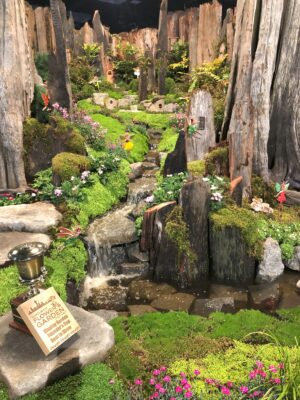Ideally, plants in gardens and greenhouses are designed in layers. And the most neglected layer is right at the bottom—the groundcovers. Using living plant material instead of just mulch makes for easier maintenance, and less weeding. This is true in garden beds and in containers, where shallow-rooted groundcovers do not compete with their deeper-rooted companions. They form a community, preventing weeds and holding moisture.
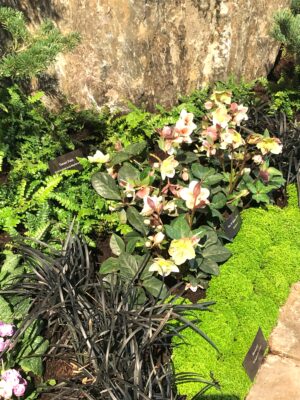
Good groundcovers work hard. They must be short (under a foot tall), not too vigorous, excellent weed-blockers, with a tolerance for both sun and shade throughout the season. That’s a lot to ask of any plant.
For years I have been auditioning groundcovers for my garden and containers. You can too. Buy a few likely candidates, try them out in various spots, and either pull them out if they don’t meet the demands—especially those that are too rampant—or, if they’re winners, buy more of the same.

Last month, at Seattle’s Northwest Flower and Garden Festival, one display stood out for their use of groundcovers. “The Secret Garden,” created by Landon Moore for Nature Perfect Landscape and Design, not only won the Founders Cup Best in Show, but featured a wide variety of potential groundcovers to audition. Here are a few that might work well outdoors or in the greenhouse. Interestingly, all of these bloom with small white flowers.
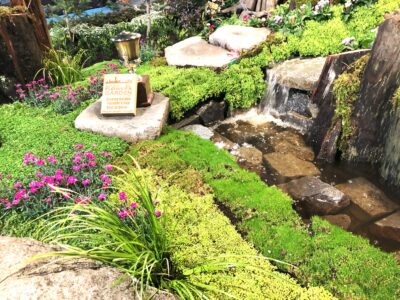
Arenaria balearica – Corsican sandwort grows in part shade. At three inches tall with a one-foot spread, its common name implies that this is a tough groundcover. It could be tucked next to stepping stones in a pathway. In a greenhouse, it can soften the edges of large containers. Zones 4-8
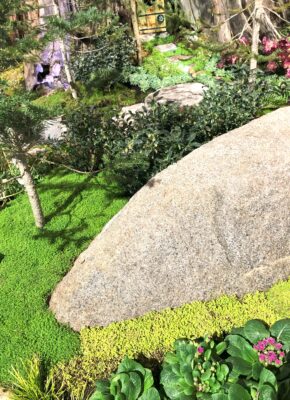
Iberis sempervirens Snowsation™ – This evergreen candytuft will grow eight inches tall by one foot wide. It prefers full sun for best flowering, and this Snowsation™ cultivar shows off more compact dark green foliage than the species. Grow it near other taller sun-loving shrubs or use as a filler in large pots. Tolerates drier conditions once established. Zones 4-9
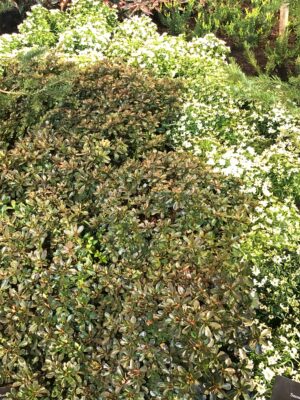
Sedum dasyphyllum ‘Major’ – Again, the common name, Corsican stonecrop, denotes a tough plant. It prefers well-drained lean soil and grows four inches by one foot. The semi-evergreen leaves form small knots of silver-blue, contrasting well with other groundcovers. Will take sun to semi-shade. Zones 5-9
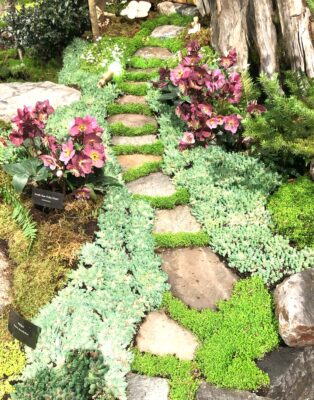
Selaginella kraussiana ‘Brownii’ – Evergreen spikemoss is related to ferns. The low-mounding foliage would look great as a companion in moist conditions. It’s two inches tall by one foot wide. Good terrarium candidate. Zones 7-9
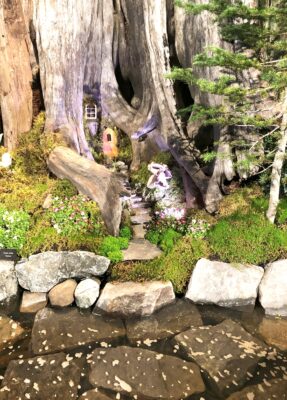
Soleirolia soleirolii ‘Aurea’ – Packing more visual punch than the commonly grown green variety, golden baby’s tears can be grown outdoors as an annual or in a greenhouse as a perennial. It’s only half an inch tall, but can spread many feet. It prefers low light and regular water. Zones 9-11
